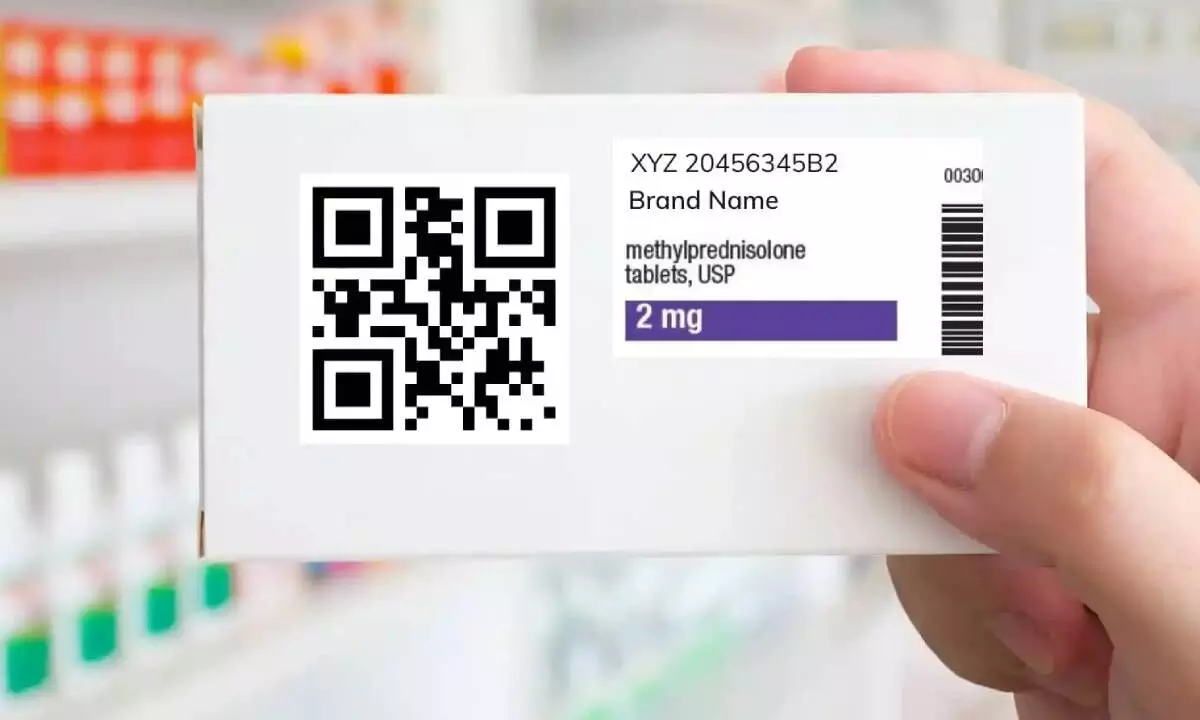Govt should incentivize pharma industry to offset QR code capex
The Union Health Ministry will introduce QR code on the top 300 brands of medicines available in the Indian market from August 1, 2023
image for illustrative purpose

Come August 1, 2023, the Union Health Ministry will introduce QR code on the top 300 brands of medicines available in the Indian market which will help identify fake and spurious drugs in the drug supply chain in the country. The introduction of QR code on the top 300 brands of medicines is very relevant as the sale of counterfeit medicines has recently emerged as a global issue. The issue of death of several children in Gambia and some other countries after consuming Indian-made cough syrup is a case in point. The QR code, which will prevent the sale of counterfeit drugs, will also verify whether a drug is genuine or counterfeit, and will include information such as the company, manufacturer, expiry date, and brand name, among other things. As per the gazette notification, QR code will contain the unique product identification code, generic name of the drug, brand name, name and address of the manufacturer, batch number, date of manufacture, expiry date and manufacturing license number. The QR code is not only done to identify misbranded or counterfeit pharmaceutical products but also will help to recall these products if there is a quality issue with the product. There are currently systems in place for recalling products based on the manual tracing of products that are distributed throughout the country. It may start from manufacturing premises to the CNF agents to wholesalers to distributors to retailers, to users.
Of course, the Health Ministry’s action will in the long run prove to be a big boost to the pharmaceutical industry’s efforts to maintain the authenticity of medicines in the country. The Ministry has taken a well considered decision as it will help trace source and affirm authenticity of medicines while also improving patient health and safety. Currently, the recalling of medicines is done manually and it is a very difficult task. Through the QR code, this recalling system will become a simple process. It is true that the pharmaceutical companies leave no stones unturned to maintain the authenticity of medicines and to make sure that counterfeit medicines are eradicated from the market. Now, the introduction of QR code on medicine packages will offer transparency about the manufacturing process, contents of the medicines and the expiry date. A QR code can allow easier access to information on the prescribed medicine by the patient. The patient does not need to solely rely on the information physically printed on the packaging of the medicine. Also, the information about the medicine can be easily shared to others if required. The information stored through a QR code is much more dynamic and engaging, and these codes can even allow for better data monitoring by a pharmaceutical company. Overall, it is a welcome move by the government as the QR codes on the packaging of top 300 brands of life-saving medicines will go a long way in preventing distribution of counterfeit medicines and proper administration of medicines to patients. Definitely, the new step will come in handy for the pharmaceutical industry to improve its credibility.
All said and done, there is a huge capital expenditure involved initially for printing QR code. It involves the cost of LAN, the software, the camera, the sensor, the printer plus the QR code which ultimately is a huge cost. The cost of setting up the infrastructure for authentication of the top 300 drugs is huge as each camera costs Rs 4 lakh per line, thermal inkjet printer is Rs 4 lakh per line and 300 brands need minimum 3 to 4 lines spread across multiple locations. In addition, one-time costs of software and licenses need to be borne. So, the pharmaceutical industry in the country has proposed to the national drug price regulator the National Pharmaceutical Pricing Authority (NPPA) to allow 30 paisa per unit additionally in the ceiling price to offset the capital expenditure for every scheduled formulation of top 300 drugs for printing QR code. Of course, the government’s action is an attempt to curb circulation of spurious drugs in the country. Overall, it is a welcome move by the government as the QR codes on the packaging of top 300 brands of life-saving medicines will go a long way in preventing distribution of counterfeit medicines and proper administration of medicines to patients. Definitely, the new step will come in handy for the pharmaceutical industry to improve its credibility. But the government should provide some relief to the industry to offset the capital expenditure as there has been an unprecedented increase in input costs.
(The author is freelance
journalist with varied experience in different fields)

